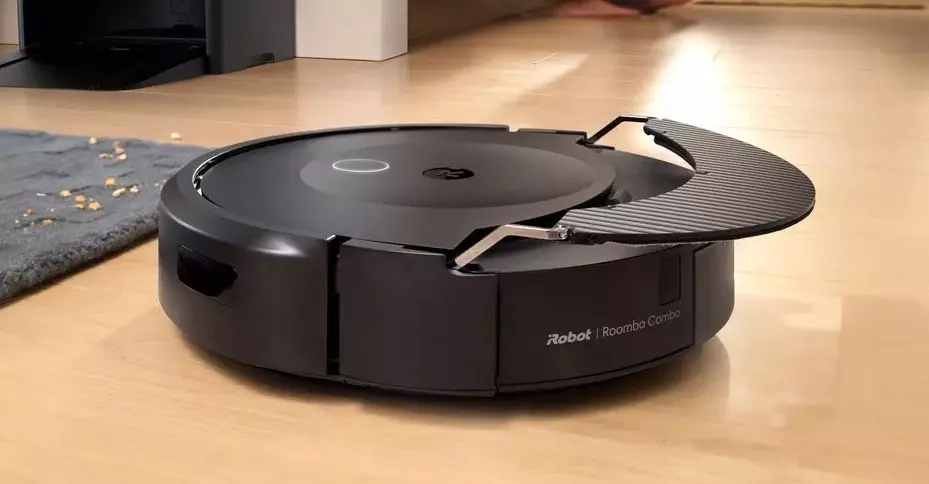The technological landscape is ever-evolving, and Apple’s latest release, iOS 18.4, exemplifies this relentless march toward innovation. On the surface, this update might appear as just another routine upgrade; however, for the discerning homeowner leveraging smart technology, it is a pivotal moment. The most thrilling aspect of iOS 18.4 is the introduction of the Matter protocol integration, which promises a more cohesive experience for users of robotic vacuum cleaners. Instead of being restricted to specific ecosystems, brands such as Roborock, iRobot, and Ecovacs now allow their devices to talk to the Apple Home app. This integration paves the way for unprecedented control and automation within our smart homes.
The Matter Revolution
Matter has emerged as a groundbreaking standard in the realm of smart home devices. Its launch aims to cultivate cross-compatibility among systems, allowing for seamless communication between devices and removing the rigid boundaries that previously dictated brand loyalty. The introduction of Matter support in the latest iOS iteration is nothing short of revolutionary. Roborock, iRobot, and Ecovacs embracing this protocol means that homeowners can now add their robot vacuums to their Apple Home setups effortlessly. This newfound flexibility caters to a growing consumer sentiment that values both efficiency and the freedom to choose. Who wouldn’t want the luxury of customizing cleaning schedules and room-specific tasks with a mere voice command or a swift tap on their iPhone?
The Brands Respond
Each participating company is responding to this monumental shift in the consumer landscape with fervor. Roborock is leading the charge by enhancing Matter deployment in models such as the S8 MaxV Ultra and the Qrevo series. These models will not only benefit from basic Matter functionality, like initiating cleaning cycles but will also exhibit better responsiveness and connectivity with other smart devices within the ecosystem. The rollout of firmware updates during early April illustrates an eagerness to adapt to modern consumer needs. However, while Roborock’s commitment is commendable, the question remains: how consistently will these updates be managed moving forward?
In a similar vein, iRobot is embracing this transformative moment with its Roomba Combo 10 Max, which becomes a poster child for Matter compliance. The ability to engage with this device via the Home app and Siri marks a pivotal shift in user engagement. Commitment to user-friendly interaction is essential, given our reliance on technology to simplify our lives. However, while the user experience is certainly improved, there’s a lingering concern regarding advanced features—many capabilities like zone mapping remain limited to proprietary apps. For tech-savvy users, this bifurcation may feel like a step backward rather than the promised leap forward.
Ecovacs Joins the Fray
Ecovacs, too, is quick to embrace the future by introducing Matter firmware updates for various models including the Deebot series. The phased rollout of these updates implies a meticulous approach to ensure reliability—a critical factor when it comes to home automation. With consumer convenience at the forefront, companies like Ecovacs must tread carefully to ensure that these updates enhance rather than complicate the user experience. As these manufacturers navigate the complexities of this burgeoning technology, the sense of urgency to remain relevant within this competitive landscape cannot be understated.
Challenges and Limitations ahead
However, not all that glitters is gold. While the introduction of Matter is undoubtedly significant, it’s essential to manage expectations about the breadth of functional improvements it offers. Current restrictions mean that sophisticated features like mapping and individualized cleaning zones remain tethered to each brand’s dedicated applications. The ideal of a universally-convenient smart home is tantalizing, but the reality appears to be a symphony of disparate applications still required for advanced functionalities. Therefore, despite Apple’s bold initiatives, a sense of compromise is evident.
This moment should serve as a catalyst for broader change in the smart home industry. If brands can leverage their respective core competencies while ensuring robust integration into unified platforms, they may well unlock an entirely new landscape of automation. As we stand on the brink of this exciting era, it’s imperative that we scrutinize not just what technologies can do today but also how they can evolve to meet the expectations of an increasingly tech-aware consumer base.


Leave a Reply